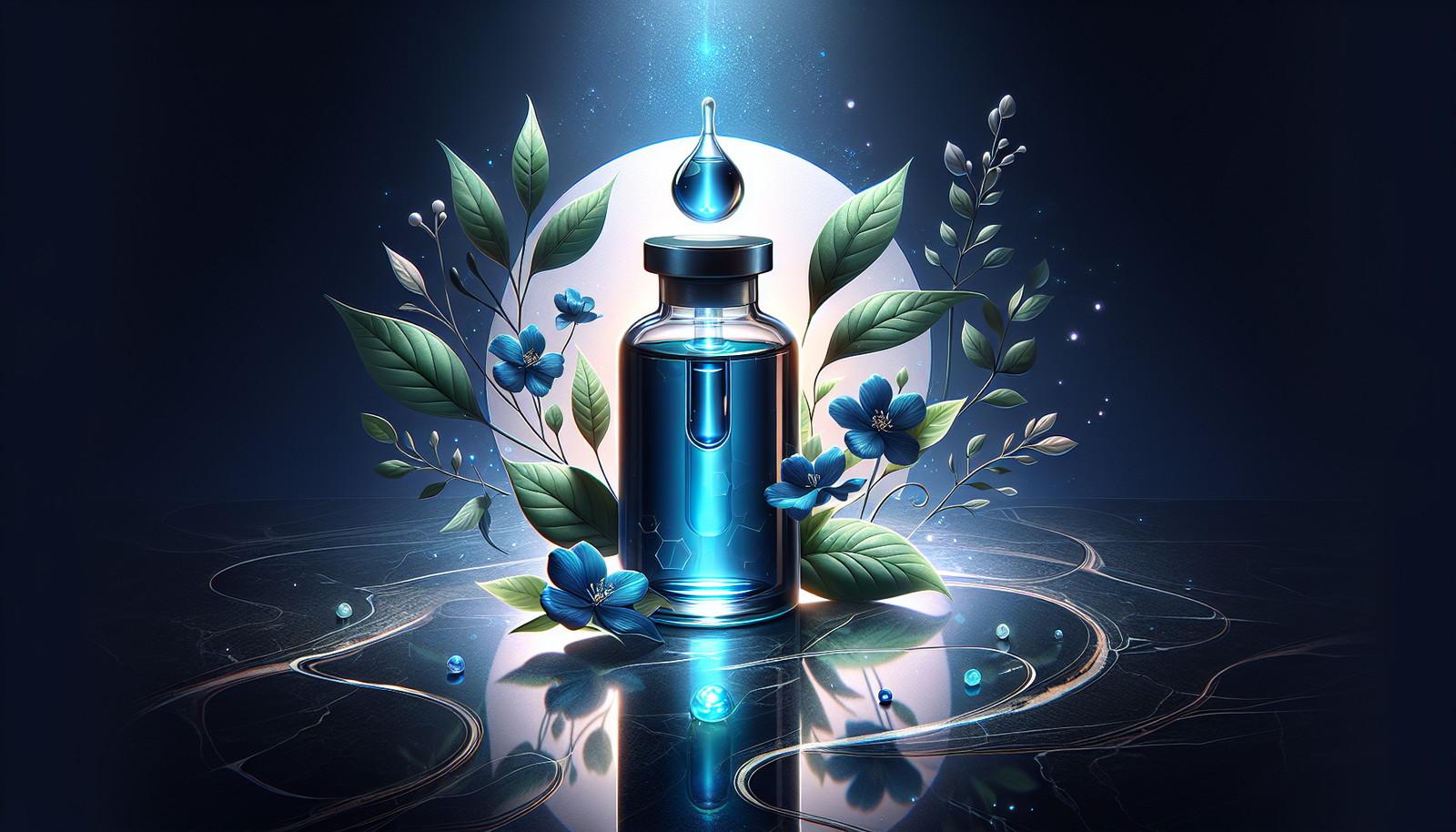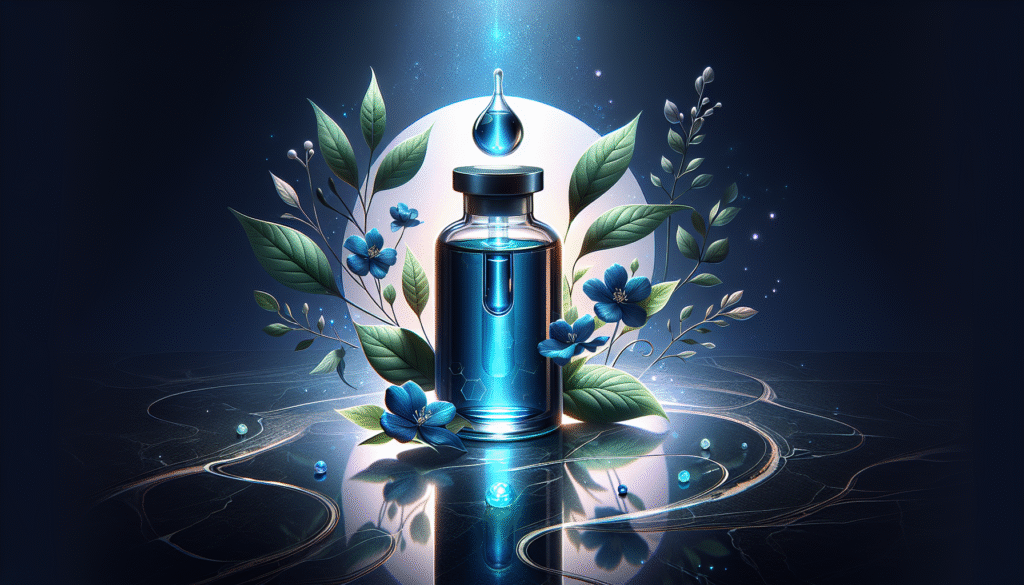
What if there was a compound that not only has historical significance but is also being investigated for its potential in enhancing longevity? Methylene blue, a synthetic dye with a complex history in medicine and science, is emerging as a topic of interest in the field of longevity research.

Understanding Methylene Blue
Methylene blue is a chemical compound that has been used for various purposes since the late 19th century. Originally developed as a dye, it has found its way into medicine as an antiseptic and has been utilized in the treatment of methemoglobinemia, a condition where an abnormal amount of methemoglobin is produced in the blood. Methylene blue has also been studied in the context of neuroprotection and cognitive enhancement.
As you read through this article, it’s essential to differentiate between established facts and emerging myths surrounding methylene blue, particularly in the realm of longevity.
The Chemical Background of Methylene Blue
Chemically, methylene blue, or methylthioninium chloride, is classified as a thiazine dye. Its molecular formula is C16H18ClN3S, which outlines its structure comprising carbon, hydrogen, chlorine, nitrogen, and sulfur atoms. Understanding these components can provide insight into its biological interactions and potential health benefits.
Pharmacological Properties
Methylene blue exhibits a range of pharmacological properties. Its role as a histological stain facilitates visualization in biological tissues, while its pharmacokinetics allows it to cross the blood-brain barrier. This ability is vital for exploring potential applications in treating neurodegenerative diseases.
Potential Mechanisms of Action
-
Antioxidant Properties: One of the appealing aspects of methylene blue is its antioxidant capacity. By neutralizing free radicals, it may reduce oxidative stress, which is a significant contributor to aging and various age-related diseases.
-
Mitochondrial Function: Research indicates that methylene blue may enhance mitochondrial respiration, thereby increasing ATP production, which is essential for cellular energy. Improving mitochondrial function is crucial when considering longevity and overall health.
-
Neuroprotective Effects: Investigations into methylene blue’s ability to protect neurons from damage have shown promise. This could potentially slow down cognitive decline, making it a focal point for longevity research.
Methylene Blue and Longevity: The Fascination
The fascination with methylene blue in the context of longevity stems from its historical and contemporary uses. Though primarily known as a dye, its effects on human health raise questions about the potential for extending lifespan and enhancing quality of life.
Historical Context
Methylene blue boasts a storied history, initially developed in the 1870s and subsequently tested for its benefits in various medical scenarios. From being a treatment for malaria to its contemporary applications in mental health, its journey reflects the evolving understanding of therapeutic agents.
Case Studies and Research
Several studies have begun to investigate the relationship between methylene blue and longevity, highlighting both its potential benefits and the need for caution.
| Study | Findings |
|---|---|
| Study 1 | Methylene blue improved cognitive functions in mice, suggesting potential applications in age-related cognitive decline. |
| Study 2 | In vitro studies demonstrated its antioxidant properties, contributing to cellular health. |
| Study 3 | Preliminary human trials indicate safety and potential neuroprotective effects. |
Methylene Blue in Modern Research
Contemporary research into methylene blue often focuses on its potential neuroprotective qualities. Researchers are examining how this compound may influence cognitive health as individuals age.
Myths Versus Facts
With the rising popularity of methylene blue as a supplement for longevity, various myths have emerged. Understanding the distinction between these myths and established facts is critical for making informed decisions.
Myth 1: Methylene Blue Guarantees Longevity
While some proponents of methylene blue tout it as a “longevity elixir,” scientific evidence supporting such claims is limited. Although it may have properties that could contribute to health, no conclusive evidence exists to suggest that it directly enhances lifespan.
Fact 1: Requires Cautious Use
Methylene blue is a potent compound, and while it might offer health benefits, it is essential to approach its use with caution. Self-medication or unsupervised intake can lead to adverse effects, and consultation with healthcare professionals is paramount.
Myth 2: It Acts As a Simple Antioxidant
While methylene blue exhibits antioxidant properties, it’s crucial to understand that antioxidants work through complex mechanisms in the body. Not all antioxidants produce the same effects, and their impact can vary according to the context and concentration.
Fact 2: Multifaceted Applications
Methylene blue demonstrates multiple pharmacological effects beyond its antioxidant capacity. Its interactions with cellular mechanisms indicate that it might offer benefits in several therapeutic areas, particularly in neuroprotection.
Current Applications and Considerations
Medical Uses
In medicine, methylene blue has been employed for a range of applications, including:
- Antiseptic: Its use in treating infections has a long history, particularly in surgical settings.
- Methemoglobinemia Treatment: Methylene blue is an established treatment for this condition, highlighting its effectiveness in specific contexts.
- Potential Cognitive Enhancer: Its neuroprotective properties have led researchers to investigate its effects on cognitive function in aging individuals.
Nutritional Supplement
In the realm of nutritional supplements, methylene blue is marketed as a nootropic, appealing to those looking to improve cognitive function and support longevity. While anecdotes abound, scientific backing remains in the nascent stages.
Safety and Side Effects
The safety profile of methylene blue is a critical consideration. While it is generally regarded as safe when used appropriately, it can lead to side effects, especially at higher doses. Some individuals may experience:
- Nausea
- Headaches
- Dizziness
- Allergic reactions
Consulting a healthcare provider before starting any new supplement is always advisable, especially with a compound as unique as methylene blue.

Conclusion
As you consider the facts and myths surrounding methylene blue in the context of longevity, it is essential to approach this compound from an informed perspective. While its historical use and potential applications in cognitive enhancement are intriguing, the conversation around longevity is complex and requires ongoing research for deeper understanding.
Engaging with this subject means being aware of the nuances and emerging studies that continuously shape our knowledge. Methylene blue exemplifies the intersections of historical use, modern science, and the tantalizing possibilities of extending life and improving health.
In navigating the world of longevity, you have the opportunity to make informed choices, critically engage with emerging research, and seek guidance from professionals who understand these compounds deeply. As the understanding of methylene blue and its potential expands, you may find that blending evidence-based strategies with personal wellness practices could yield beneficial outcomes in your quest for longevity.